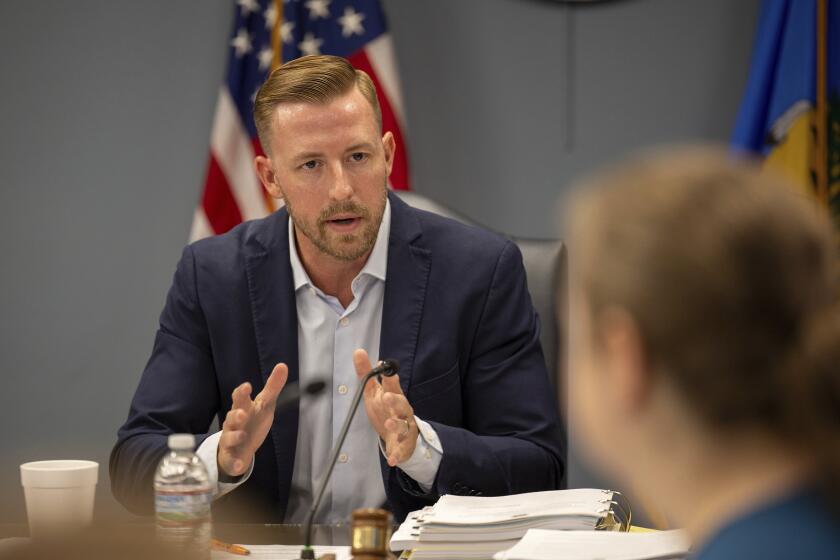O.C. COLUMN RIGHT / ROBERT K. DORNAN : Moving Out to Front Line of Education : Many of the half a million servicemen and women being released from active duty could help revitalize our schools.
By the mid-1990s, more than half a million U.S. soldiers, sailors and airmen will have been released from active duty. They are being “let go” because they did their job well--they won the Cold War.
Meanwhile, millions of children and, likewise, America’s future economic outlook, are at severe risk because of declining education standards. U.S. kids, once at the head of the international class, now score embarrassingly below their counterparts from around the world, especially in math and science.
These are two very different problems. Fortunately, the solution to one may rest in the solution of the other.
I, along with Congressman Ike Skelton (D-Mo.) and 12 co-sponsors, have introduced a bill to channel qualified U.S. servicemen and women, discharged from the military due to scheduled force reductions, into teaching careers.
The New Careers in Education Act is modeled after a U.S. Army initiative which encourages soldiers to take advantage of educational programs that provide college graduates with the certification necessary to teach. Specifically, this legislation would provide stipends, out of existing funds, for educational expenses to members of the armed forces who served on active duty for a minimum of 180 days. In return, participants must teach for at least two years at the elementary or secondary school level.
This legislation would integrate former military personnel into the civilian economy while raising the quality of education by tapping into the vast resources and expertise of U.S. armed forces personnel.
Former military personnel have consistently proven to be excellent teachers. Many have taught at a military service academy or an advanced military school such as the National War College. Others have instructed new recruits in electronics, computers and various high-technology skills.
As the United States faces new geopolitical challenges and increasing global competition in the trade arena, we cannot afford to ignore this abundant supply of potential teachers of our nation’s future leaders. With their specialized training, servicemen and women possess the maturity, discipline, motivation and professional qualifications to make badly needed contributions to the American classroom.
In 1989, President Bush and the nation’s governors established the National Education Goals Panel to set desired performance levels for American schoolchildren. Among the panel’s findings in its first report card on the state of our educational system were: 1) less than 20% of the children in fourth, eighth, and twelfth grades achieve “expected levels of competency” in math; 2) American students aged 14 scored significantly lower, on average, than students in 10 out of 17 major countries in science achievement; and 3) “substantial numbers” of Americans aged 21 to 25, although they possess basic literacy skills, have not mastered some tasks such as interpreting the main argument in a newspaper column.
Part of the problem is a lack of discipline in the classroom. According to former Secretary of Education William Bennett, American high school students “say the biggest problem they face is disruption by other students who will not let them learn. . . . We must once again regain order in the classroom if we hope to improve American education.”
A conducive learning environment is no longer the norm in our schools. Fortunately, ex-military personnel, accustomed to the rigors and discipline of a controlled environment, are excellently qualified to instill order in the classroom and serve as role models, especially to minority students at inner-city schools.
Of course, former servicemen and women would bring to our schools much more than classroom order. Current estimates reveal that about one-third of the officers leaving the Army alone are qualified to teach high school math, and 10 to 20% are qualified to teach science. A survey by the National Executive Service Corp. revealed that 79% of responding military personnel were interested in teaching as a new career. The New Careers in Education Act would help these and many others gain the certification they need to make the transition to meaningful careers serving the educational needs of America.
For those military members who want to teach, the New Careers in Education Act offers a tremendous opportunity. However, the real winners would be our nation’s young people who stand to gain not only positive role models but also exceptionally-qualified teachers to help guide them to become the leaders of tomorrow.
More to Read
Sign up for Essential California
The most important California stories and recommendations in your inbox every morning.
You may occasionally receive promotional content from the Los Angeles Times.










